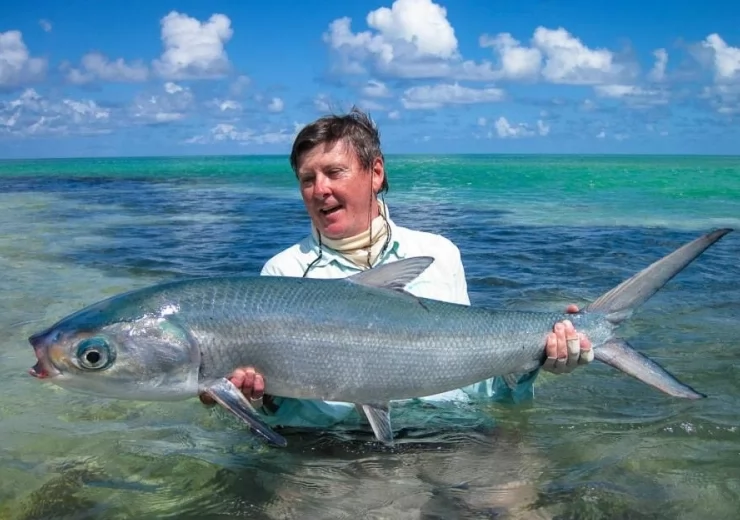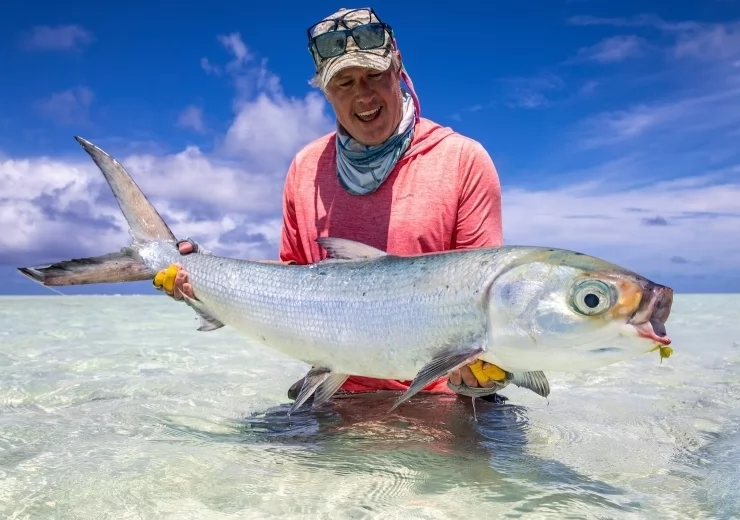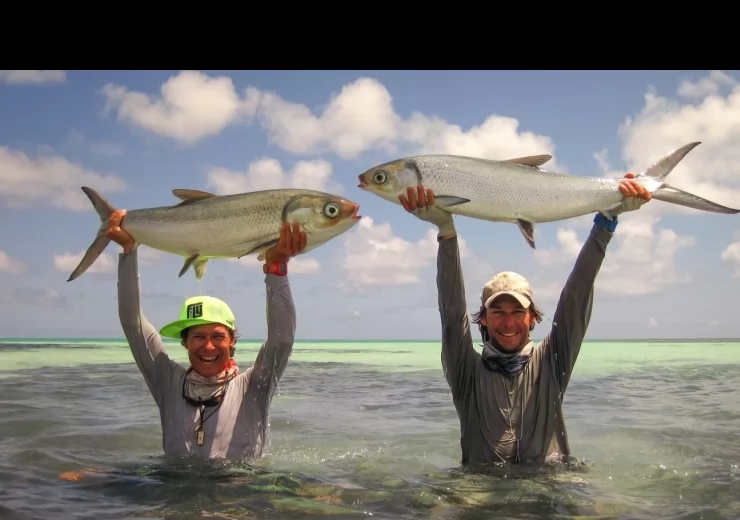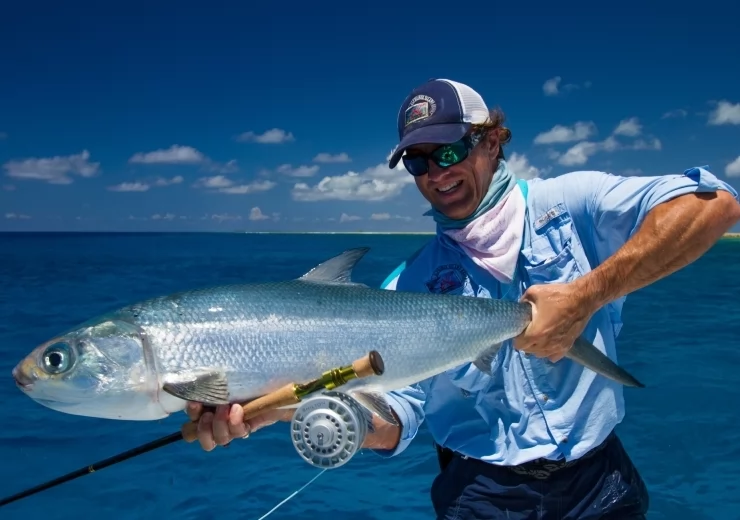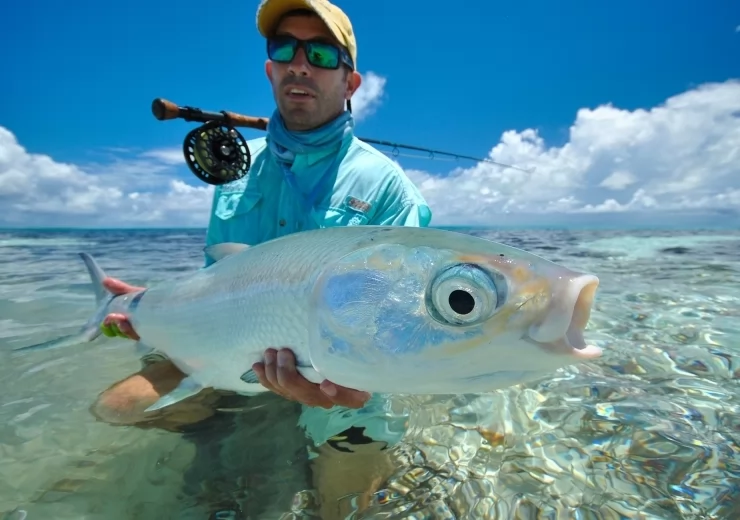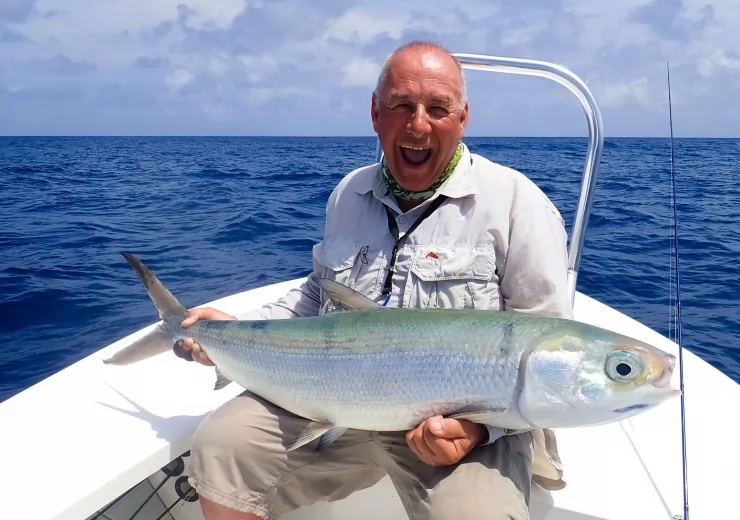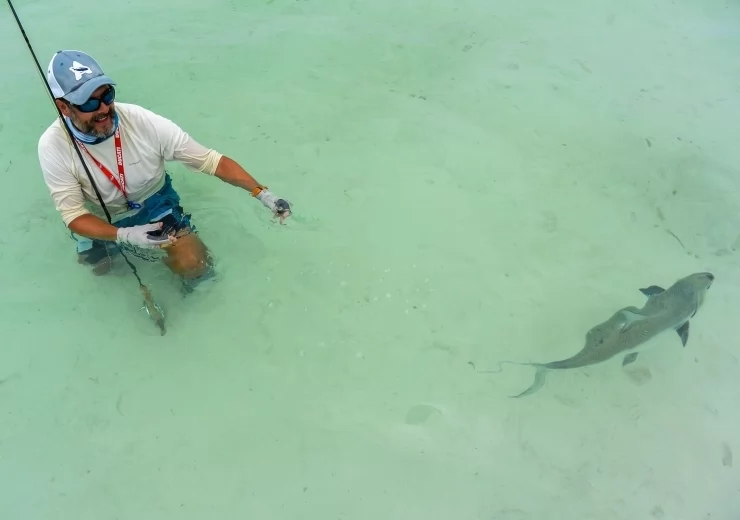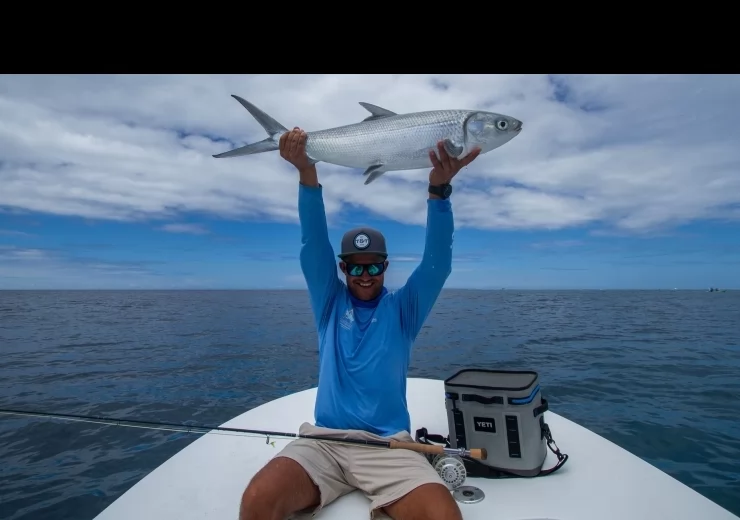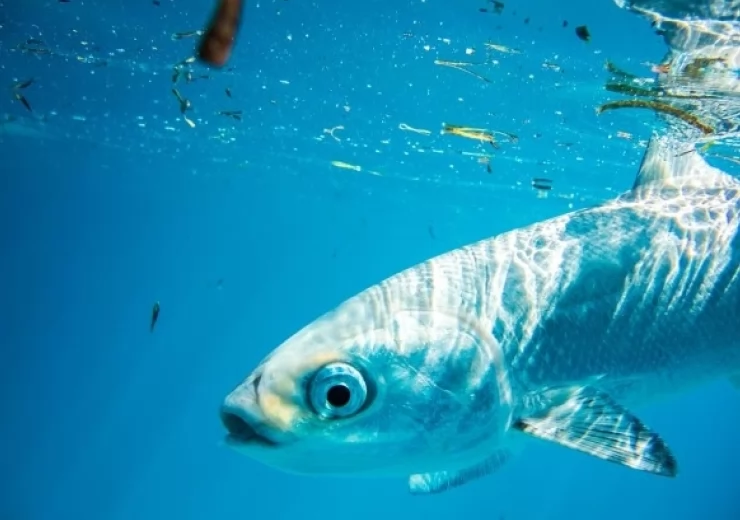INTRODUCTION
MILKFISH
Milkfish, also known as Chanos chanos, is a challenging and hard-fighting opponent. The origins of targeting this species on the fly stems back to Alphonse Island and the lagoon of St. François where these techniques were first pioneered and developed.
Also known as the fork-tailed devil, the Milkfish is characterised by its torpedo-shaped body, large V-shaped tail, disproportionately large eyes and white underbelly which gained it its name. Small, cycloid scales cover the distinct lateral line, giving the sides a silvery appearance, while the top ranges from olive green to blue. Their spineless fins are comprised of a single dorsal and large pectoral fins made up of 12 soft rays. One of the few toothless flats species, their mouth has a slightly upper-facing jaw and their gill arches have numerous long, thin and closely-set rakers due to their spineless fins are comprised of a single dorsal and large pectoral fins made up of 12 soft rays. One of the few toothless flats species, their mouth has a slightly upper-facing jaw and their gill arches have numerous long, thin and closely-set rakers due to their specific diet.
Milkfish are usually relatively easy to spot. When fishing on the flats in knee to waist-deep water, they can usually be found in small pods cruising over algae patches with their tails protruding out of the water as they feed on the bottom. When feeding in deeper water, they will swim to a depth where there is the greatest abundance of food. This can occasionally make them tricky to spot as they are sitting a few metres under the surface. For the most part, the fish can be seen making a bow-wake on the surface with their heads out of the water feeding at the top of the water column.

